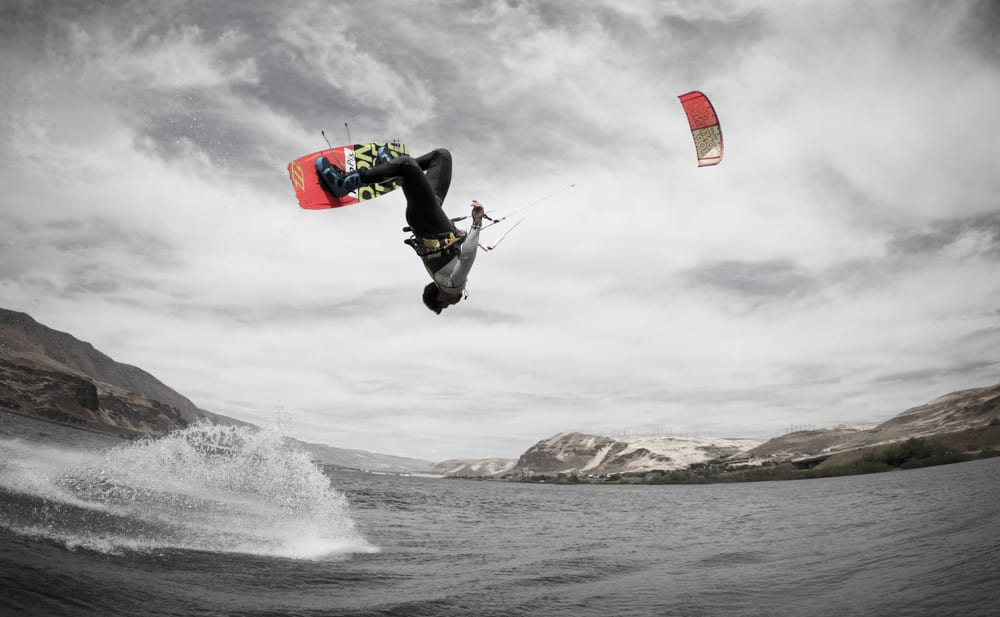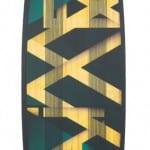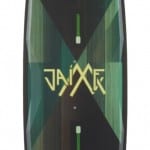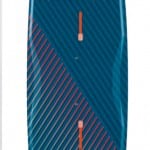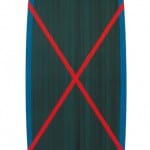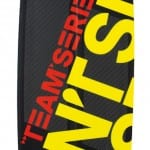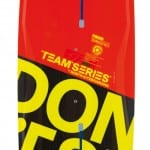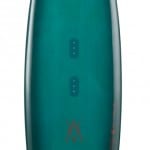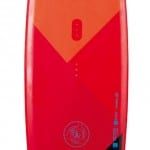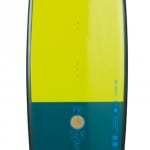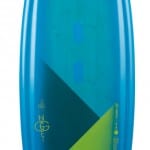Visit North for more info.
Get full 2015 gear info from 26 brands in the TKB 2015 Buyers Guide.
For 2015, North’s product line received a number or refinements, mostly related to increased performance and versatility. The Dice, North’s do-it-all kite released in 2014, got the most significant changes along with the Jamie and Team Series twin tips, as well as the Pro Series and Whip surfboards. New team rider Aaron Hadlow also collaborated with North and now has his own signature board and new custom bridle setting on the Vegas kite. Dan Schwarz, Rep/Guru at North, gives us more details on what’s coming from the brand.
North has a solid lineup for 2015, what type of rider is each of the 2015 kites meant for? Our bestseller, the Rebel, is back with the same target audience: Freeriders who like to jump big, cruise comfortably, dabble in waves, and do it all with the best safety system on the market. The Evo saw some big changes last year and for 2015 it retains its place in our lineup as a 4-line freeride kite, much like the Rebel, but with one less line. The Dice made a tremendous entrance into our 2014 lineup, and continues this year as our do-it-all, performance wave/freestyle/wakestyle/freeride kite. It works well for intermediate and advanced riders looking to get the most in the waves or freestyle/flat water, without alienating old-school jumpers and freeriders. The Vegas is, as it’s been for 10 years now, a performance C-kite, meant for advanced wakestyle/freestyle riders looking for solid uncompromised unhooked performance. The Neo is back as our advanced wave-specific kite. It now has a freeride setting to give it a bit more depower and slow down the turning a bit, but this kite is really meant for people looking to get the most performance out of their gear in waves. Then for racers we have the Dyno with its podium-inducing race performance. For light winds, we have three options: The Juice is meant for freeride/wave/all-around riding in lighter conditions; the 18m Rebel is for big air freestyle and the larger Dynos are for those who want the maximum upwind ability out of a light wind kite.
After a very strong first year on the market the Dice returns for 2015. This kite is marketed as a wake/wave hybrid. What kind of kiter should consider the Dice and how does it meet the need of both disciplines? The 2015 Dice has a couple of significant improvements over the 2014 model. The canopy shape seems to make the kite slightly more grunty while sitting slightly deeper in the window to give you a stronger, more steady pull. Besides the obvious improvements to low-end, this also seems to benefit both the wakestyle and wave/drifting ability of the kite. The addition of a small “V” to the tip of the front bridle helps the wingtips maintain their shape and overall kite performance as you get overpowered, which allows you to dump the power a bit better as you’re heading down a wave.
The Rebel continues to be a very popular kite in your lineup. What changes will diehard rebel fans find for 2015? As always, the Rebel is all about evolution, not revolution. Since 2007 each version of the rebel has offered so much performance and such great feel that now in 2014 people would be happy if we didn’t do anything at all to the kite. According to Ken, the biggest change is dropping the cam battens in the LE, which means less maintenance and easier packing. This led to small changes in the entry canopy, and though it’s early in the year, the feedback is that it is the best-jumping rebel yet, and considering how well the Rebel has always jumped, those are very high accolades.
When it comes to the average kiter interested in an all-around freeride kite, how should they choose between the Rebel and the Evo? If you want the feel and added safety of a 5-line system, go with the rebel. If for whatever reason you don’t like having five lines, go with the Evo. If you’re not committed one way or the other I’d say the biggest difference is the feel. Many kiters prefer the feel of the Rebel because there’s simply no way to make a 4-line bridled kite with the same positive bar feedback that you get with a direct connection 5-line kite. At the same time, if you’ve always flown 4-line bridled kites, you may find the bar feel of the 4-lined Evo to be more natural.
When the 2015 Vegas is ridden in Hadlow’s bridle mode, how does it perform differently to the stock 5-line setup? The 6-line Hadlow setup was designed by Hadlow for people who ride like Hadlow. It allows the Vegas to deliver the ultimate slack for advanced wakestyle/freestyle moves at the sacrifice of the range and freeride ability that the Vegas on the standard 5-line setup delivers.
Have you made any changes to the Neo for 2015? The 2014 Neo was extremely popular among wave riding afficionados. One of the biggest advantages of the kite was that you could ride a 7m, which turned quicker than most 7ms on the market, when others were riding 9m kites. The problem with this was that many people were riding the wrong size kite, taking out a 9m Neo when others were on other 9m kites, and then complaining that the kite didn’t depower enough. In response to this criticism we added a new setting to the front bridle called the ”˜freeride setting’ which slows the kite down and gives it better high-end. This way we can still keep the hardcore wave riders just as happy while also satisfying those who want to freeride or who want a bit more range out of their kite.
Increasingly, kiters in light wind areas are turning to race kites to get the most out of their conditions. How does your dedicated race kite double as a light wind freeride kite? In truth, the Dyno will work as a light wind freeride kite, mostly because it goes upwind so well and yet still drifts when heading downwind on a wave. Plus, as a race kite it is quite fast through the window so it jumps very well. However, for those looking for an all-around freeride kite, the performance of our Juice may be what you’re looking for; it has a more robust construction as the Dyno is a performance race-oriented design that sacrifices some redundant reinforcements in favor of ultimate lightweight performance.
Besides the new bright yellow color, what’s new for the 2015 Trust bar? The biggest change is the shift from a double front-line safety on our quad bar to a single front-line safety. All of our 2015 4-line kites were designed around this new safety and it seems to offer easier self rescues, improved self landings, and safety depower closing in on that of our 5th element. We also changed the height of the “Y” on our 5th element bar to more closely match that of our quad bar in order to minimize any performance differences when switching from one system to the other on our 4/5 line compatible kites.
What are the big changes to the twin tip line for 2015? The bottom shapes on our Team Series and Jaime boards are more aggressive. The Team is now the best freestyle board we’ve made to date and the Jaime is the best do-it-all board with a focus on freestyle without giving up too much comfort. We’ve also added a Hadlow version Team Series board which Hadlow tweaked to create something that he felt matched what he liked in twin tip boards.
- Jaime Base
- Jaime Deck
- XRide Deck
- Ride Base
- Team Base
- Team Deck
The Select and Spike twin tips are available in North’s TeXtreme Carbon construction. What are the performance advantages of this material and what kind of riding is best suited for this type of lightweight build? Both the Select and the Spike TeXtreme are freeride boards. The advantage of using TeXtreme is the strength- to-weight ratio, and it’s contribution to progressive flex patterns that make the boards both fast/good upwind and comfortable in chop. The Select is like a mix of the Jaime and X-ride in that the weight makes it comfortable like the X-ride, while a little extra stiffness makes it good at going upwind and great for freestyle like the Jaime. The Spike TeXtreme gives you all the light wind ability of the standard construction Spike, but with low swing-weight for light wind freestyle.
What are the major differences between the Jaime, Gambler, and Hadlow twin tips and what are the various types of riding these boards are best suited for? The 2015 Jaime was actually based on our 2011 Team Series, which was extremely popular with ”˜regular Joes’ at beach demos. Since then, the Team Series has become even stiffer and more aggressive, and many riders were looking for something to fill the gap between our freeride X-Ride and the full-on freestyle oriented Team Series and the Jaime now fills that gap extremely well. The Gambler has the same bottom shape, rocker, and outline as the Team Series, but it is slightly more flexible and has a more durable sintered bottom coat to make it the ultimate wakestyle/features board. The Hadlow is very similar to the Team Series, but with a few tweaks to the shape/flex pattern as specified by Aaron to suit his personal, extremely powered style of riding.
There has been some minor changes to the surfboards this year. Run us through the North’s 2015 surf line. The Nugget is back virtually unchanged from last year, as it was our most popular board with unmatched light wind/ surf performance. The same is true of the TT version of the Nugget and the Quest. The WAM has been one of our bestselling boards for years, and Sky made a few changes to the board, basically mixing its shape with that of last year’s Pro Series to make it a little snappier and better suited to a wider range of conditions. Sky took the Kontact and gave it a single concave and thickened the board up a bit to make it a little more confidence-inspiring in the big conditions for which this board is meant. The Woohoo, our women’s board, is back and got a similar treatment as the WAM but with less volume to make it easier for women to ride it. The biggest changes were obviously done to our Pro Series and Whip which got the “CSC” treatment, chopping off the nose and the tail to make the boards more compact. Their target audience is similar to last year, with the Pro Series having slightly less volume/more rocker for control in bigger waves and the Whip being a bit flatter with more volume, especially in the tail, to help get the most out of light wind and/or smaller waves.
- Wam
- Whip
- ProS
- Nugget
Among the two new Compact Surf Concept (CSC) shapes, how should surfers choose between the Whip and the Pro Series boards? A lot of it depends on personal preference, weight, and conditions. the Whip is a bit flatter, has more volume, and a noticeably thicker tail. it rides a bit looser, so those looking for a board to throw around in smaller waves, or those who expect to be in lighter winds may prefer this board to the Pro Series. With its rockered nose, increased tail kick, thinner rails, and narrower outline, the Pro Series will hold up better in larger waves, especially in more powered windy conditions. Both boards are extremely fun for strapped or strapless airs, and both boards excel in the waves and are super easy to turn thanks to their decreased swing weight.
The various boards in the surf line utilize three different constructions, what is the benefit of each and how does each lend to performance and feel? Tough Technology (TT) is a new construction that gives a board significant durability benefits at the expense of a small gain in weight. The construction is perfect for those who may be new to surfboards and are not ready to buy the most expensive board on the market (along with the required bag) and treat it like their baby, and they may not immediately notice the performance benefits of our other construction methods. Bamboo Tech incorporates bamboo between the deck and the glass core. It gives the board a more lively feel, drops the weight down, and makes it feel a bit more like a traditional hand-shaped surfboard. The Carbon Innegra construction incorporates the lightweight/ strength of Innegra Carbon with a cork overlay. The cork has been moved directly under the skin of the board, so as the board presses up against your feet as you ride through chop, the cork significantly absorbs the impact while protecting against heel dents. This construction makes for a very light, very smooth feeling board and makes the Pro Series the board of choice for strapless airs.


